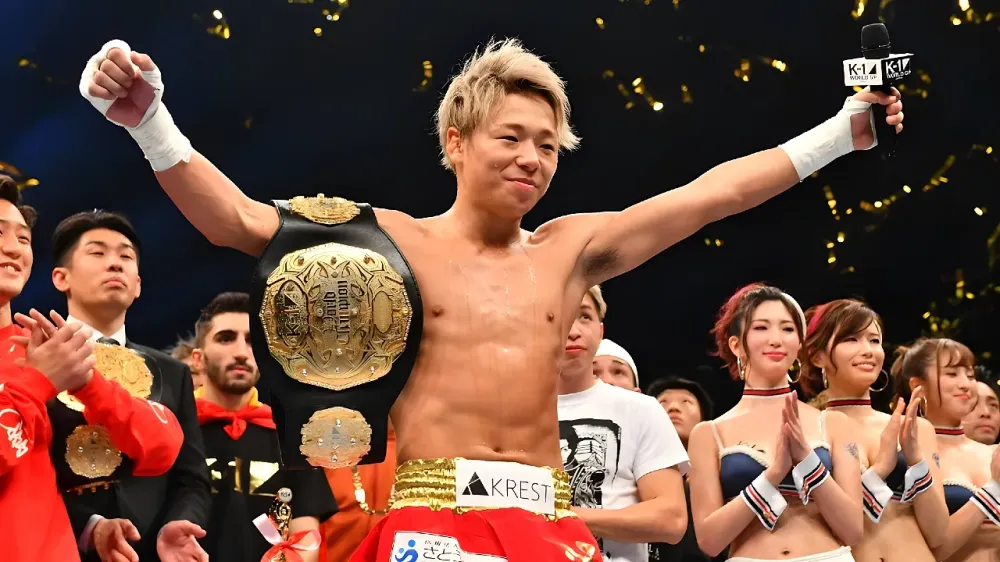Step into the adrenaline-fueled world of kickboxing as we explore its roots, evolution and meteoric rise in popularity across the globe. This pulsating martial art, with its origins steeped in the ancient tradition of Muay Thai, has seen significant transformation, evolving into the thrilling spectacle of K-1, a prominent Japanese kickboxing platform. Join us as we delve deep into the journey of this exhilarating combat sport, shedding light on its intriguing history and dynamic evolution.
Unleash the essence of this martial art as we unravel the intricate tapestry of Muay Thai, tracing back its roots in Thai history and its profound influence on the development of kickboxing. We’ll unfold the transitions and adaptations it underwent, eventually leading to the formation of the globally acclaimed K-1. This exploration promises a vivid picture of the forces that shaped kickboxing, illustrating the resilience and adaptability inherent in this high-octane sport.
Expect a comprehensive understanding of the path kickboxing has tread, from its ancient beginnings to its present-day glory. This deep dive into the heart of kickboxing will not just satisfy the curiosity of martial arts enthusiasts, but also provide invaluable insights for those seeking to appreciate the unique blend of tradition, innovation and sheer athletic prowess that defines this sport. So fasten your seatbelts and prepare for an enlightening journey through the history of kickboxing – an extraordinary tale of evolution, transformation and undying spirit.
The Traditional Roots: Muay Thai
The evolution of kickboxing begins in the east, specifically with the traditional martial art of Muay Thai. Originating in Thailand, Muay Thai has been practiced for centuries and is often referred to as “The Art of Eight Limbs”. This is because it utilizes the hands, feet, elbows, and knees in its techniques – a total of eight points of contact.
Muay Thai is known for its raw power and brutal efficiency. It focuses on delivering strikes that are hard and fast, with an emphasis on causing maximum damage. It also incorporates grappling techniques, known as the “clinch,” allowing the practitioner to control the opponent in close-quarters combat.
- Muay Boran: The precursor to modern Muay Thai, Muay Boran was developed for warfare and was thus less regulated. The fighters often wrapped their hands and forearms in hemp rope, adding a brutal element to the strikes.
- Modern Muay Thai: As Muay Boran evolved into a sport, rules and regulations were introduced. This resulted in the development of modern Muay Thai, which still retains much of the brutality of its predecessor but is a regulated competitive sport.
The Evolution: Kickboxing
The development of kickboxing can be seen as an attempt to blend the traditional techniques of Muay Thai with elements from western boxing. The result was a new martial art that was fast-paced, exciting, and accessible to a wider audience.
While kickboxing retained many elements from Muay Thai, such as the use of both punches and kicks, it also incorporated rules and techniques from boxing. This includes the use of gloves, a square ring, and a focus on footwork and strategy.
- Japanese Kickboxing: Originating in the 1960s, Japanese kickboxing was inspired by both Muay Thai and karate. It emphasized speed and technique over raw power.

- American Kickboxing: Also known as full contact karate, American kickboxing focuses more on punches and less on kicks, with kicks below the waist being prohibited.

The Modern Era: K-1
In 1993, the K-1 organization was established in Japan, marking a new era in the world of kickboxing. K-1 combined elements from various martial arts, including Muay Thai, karate, and boxing, creating a unique and exciting format that quickly gained popularity.
The success of K-1 can be attributed to several factors. One of these is the emphasis on spectacle and entertainment. K-1 events are known for their high-energy atmosphere, complete with music, lights, and fast-paced fights.
Another factor is the high level of competition. K-1 attracts top-level fighters from around the world, resulting in exciting and unpredictable fights. This combination of entertainment and competitive action has helped K-1 become a major force in the world of martial arts.
In conclusion, the evolution of kickboxing from its roots in Muay Thai to the modern spectacle of K-1 is a fascinating journey. It reflects the ongoing evolution of martial arts, as traditional techniques are blended with modern innovations to create new and exciting forms of combat.
Conclusion
In wrapping up, the evolution of kickboxing, from its traditional roots in Muay Thai to the contemporary success of K-1, serves as a testament to the continual adaptation and innovation of martial arts. Stemming from the East, specifically Thailand, the “Art of Eight Limbs” – Muay Thai, was seen as the foundation for kickboxing, offering a style of combat that was both brutally efficient and complex in technique.
Over time, Muay Thai transformed, integrating rules and regulations to develop a more structured sporting activity – kickboxing. This dynamic form of martial art amalgamated the raw power of Muay Thai and the strategic intricacies of western boxing, paving the way for a new exciting spectator sport that appealed to a broader audience.
The evolution didn’t stop there. Various styles of kickboxing emerged, each contributing its unique flair. The Japanese Kickboxing was known for speed and technique, while the American version emphasized more on punches.
The establishment of K-1 in 1993 marked a significant milestone in kickboxing evolution. Incorporating elements from different martial arts, K-1 offered a unique format that quickly gained global popularity. Its success lies in its balance between entertainment and fierce competition, attracting top fighters worldwide, thus evolving into a powerhouse in the martial arts domain.
In essence, the journey of kickboxing’s evolution provides a compelling narrative of how traditional martial arts can seamlessly merge with modern elements to create an engaging and exciting form of combat sport. 🥊🌏🎆


